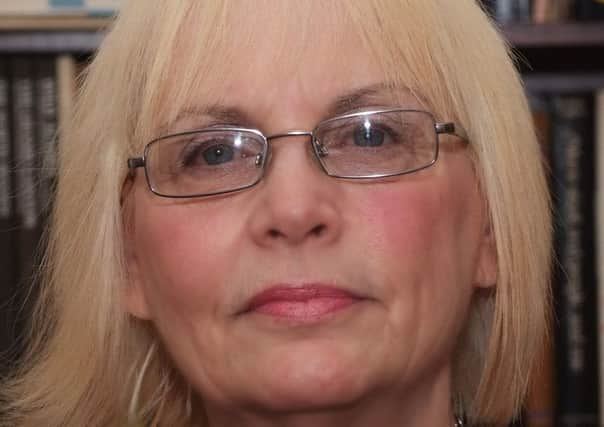Fylde coast fears over ambulance waiting times


Ambulance chiefs have been called in by county councillors to explain why response time targets for critically ill patients are being missed almost half the time in Fylde and Wyre – yet Blackpool is getting the best service in Lancashire.
The figures follow stark warnings from union bosses who told The Gazette “people could die” as a result of savage cuts to North West Ambulance Service budgets, leading to increased waiting times.
Advertisement
Hide AdAdvertisement
Hide AdAnd it comes just weeks after a furious Lytham councillor demanded urgent answers when a man was left waiting almost an hour for an ambulance after being knocked unconscious when he was hit by a car.
The incident in March is part of a catalogue of problems reported by The Gazette over the past 12 months which have seen patients across the Fylde coast face waits of up to four hours.
One community leader today claimed the “concerning” figures were “the difference between life or death”.
The official findings for last year, detailed in a report to a Lancashire County Council’s scrutiny heath group, show an ambulance got to the highest priority patients across Fylde and Wyre in eight minutes or less just 51 per cent of the time – massively below the 75 per cent target.
Advertisement
Hide AdAdvertisement
Hide AdBut for those living within the Blackpool Clinical Commissioning Group (CCG) area, that figure rises to 85 per cent.
Coun Fabian Craig-Wilson, who represents St Annes, sits on Lancashire County Council’s health steering group.
She said: “Right now, my feeling is residents in Fylde are losing out.
“We feel like we are second class citizens to people in Blackpool when it comes to the ambulance service.”
Advertisement
Hide AdAdvertisement
Hide AdThe group is due to report back to the scrutiny committee on Tuesday, which will make recommendations on how to improve the figures.
North West Ambulance Service (NWAS) chief executive Bob Williams and chairman Wyn Dignan were called in to address councillors last month and said the figures look better in Blackpool because ambulances leaving the hospital will be sent to priority patients nearby.
NWAS has ambulance stations at Blackpool, Fleetwood, Thornton, Lytham, Wesham and Broughton – but service chiefs say often vehicles leaving the hospital will be immediately dispatched to their next job.
But Coun Craig-Wilson said the problems are not limited to the ambulance service, which is often hampered by delays handing patients over to hospitals and high levels of demand.
Advertisement
Hide AdAdvertisement
Hide AdShe added: “We are going to look at this to come up with solutions so that everybody in Lancashire has the same opportunity when they need to get to hospital – to make the service the best it can possibly be so we don’t get a postcode lottery.”
Across the whole county, NWAS missed Government targets last year to respond to 75 per cent of immediately life-threatening cases within eight minutes and 95 per cent of those patients inside 19 minutes.
Life-threatening cases account for almost half of calls to the ambulance service.
Figures presented to the NWAS board yesterday show its response times in the most serious – red one – cases was the second worst in the country in March, although five other trusts also missed the 75 per cent benchmark for arriving within eight minutes.
Advertisement
Hide AdAdvertisement
Hide AdNWAS director of operations Derek Cartwright said an “unprecedented” increase in 999 calls, which saw a 9.1 per cent surge in high priority incidents, made last year particularly challenging for the service.
Mr Cartwright said: “As with all rural areas within the North West, the Trust does face challenges in meeting performance.
“However, to support patients who live in rural areas, the Trust operates Community First Responders (CFRs), who usually live and respond to incidents within their local community and surrounding areas.
“CFRs are sent to the location of an emergency to provide treatment and support until an ambulance arrives.
Advertisement
Hide AdAdvertisement
Hide Ad“In addition, the Trust also operates an Urgent Care Desk, where specialist paramedics re-contact 999 callers to determine whether there is more appropriate route of treatment for patients, as opposed to admission to A&E.
“This triage system enables ambulances to be freed up to attend life threatening incidents.”
In March, The Gazette told how residents were praised for coming to the rescue of a man who was hit by a car in Lytham.
It took an hour for the ambulance to reach Warton Street.
Coun Tim Ashton, who represents Lytham, said it was “dreadful” the man had been left waiting so long.
Advertisement
Hide AdAdvertisement
Hide AdAnd he said he was “very concerned” about the latest figures, adding: “It can be the difference between life and death.
“It seems to me there is a problem and I will make sure it is explained fully.”
In response to the concerns, NWAS said the latest figures for the current financial year so far show an improvement and the service has hit response time targets so far in May.
Across the North West, the services responded to more than 77 per cent of red one incidents within eight minutes and 96 per cent of high priority calls within the 19-minute benchmark.
In a report presented to the NWAS board yesterday, Mr Williams cited reduced workload and improved turnaround times at hospitals for the progress made.